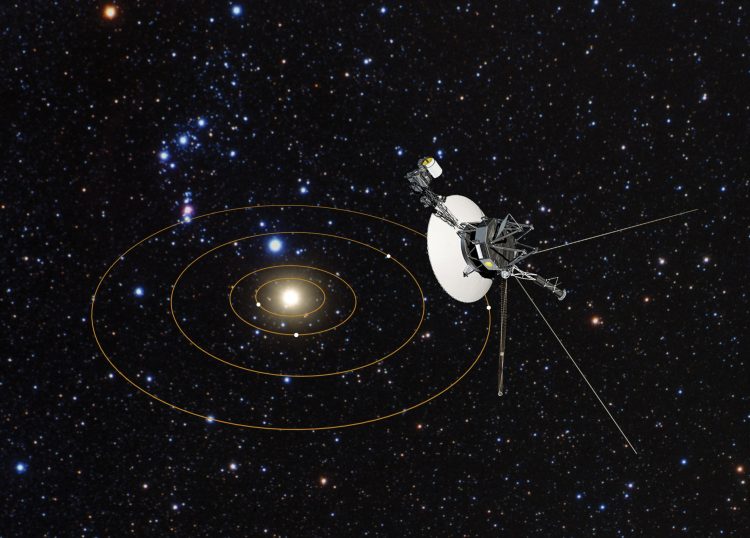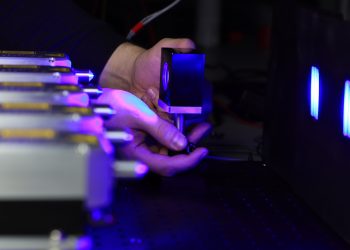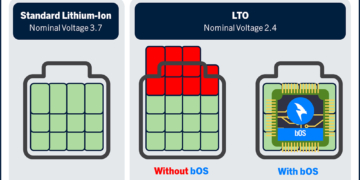Exiting the Solar System isn’t easy.
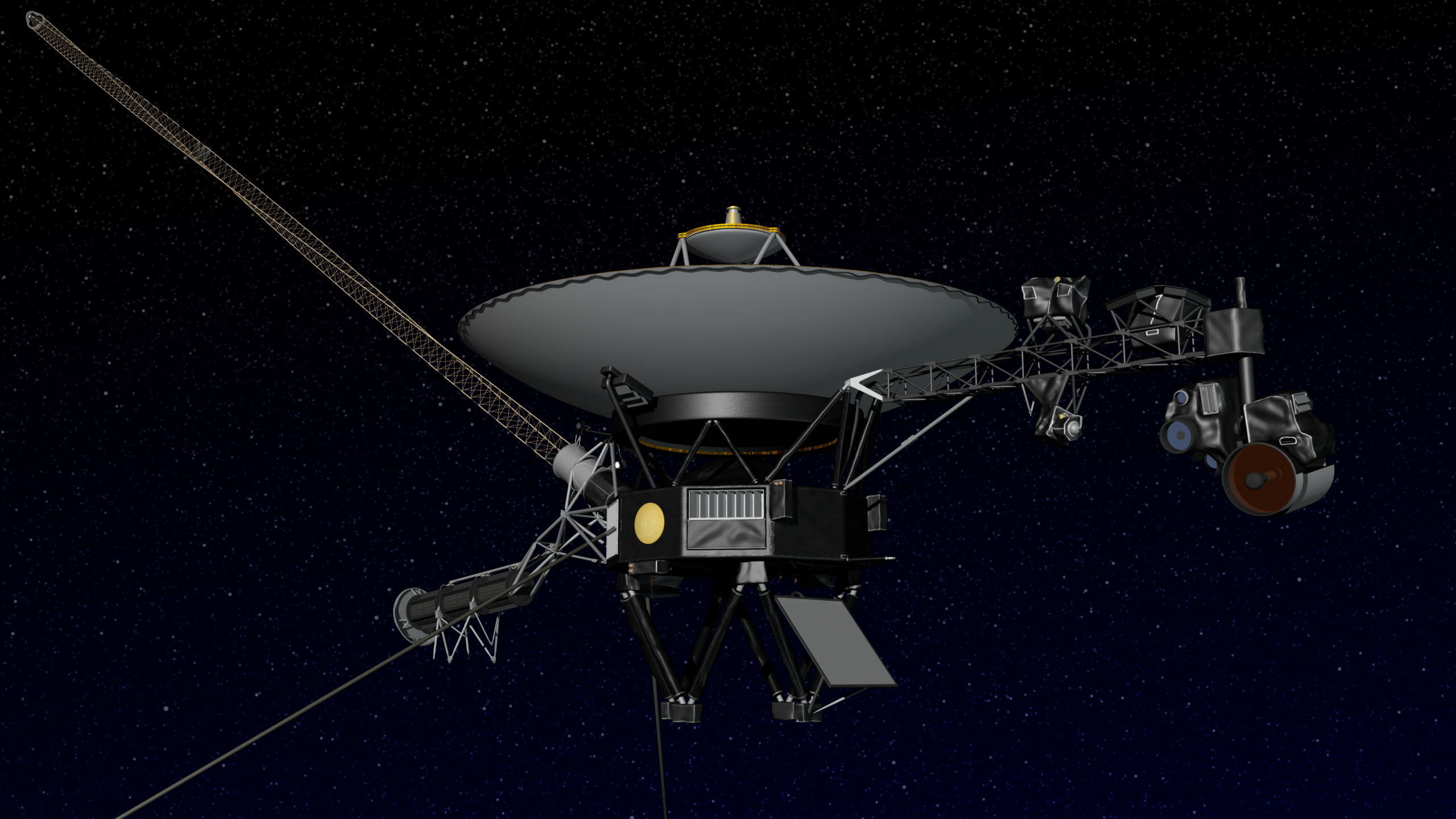


The Voyager spacecraft, illustrated here, are two of the five spacecraft currently on trajectories that will take them out of the Solar System. Both spacecraft actually left the heliosphere behind and entered interstellar space in the 2010s, and will, when Voyager 2 passes Pioneer 10 in 2023, become the two most distant spacecraft from Earth for the foreseeable future.
You must escape the Earth’s and Sun’s combined gravitational pulls.
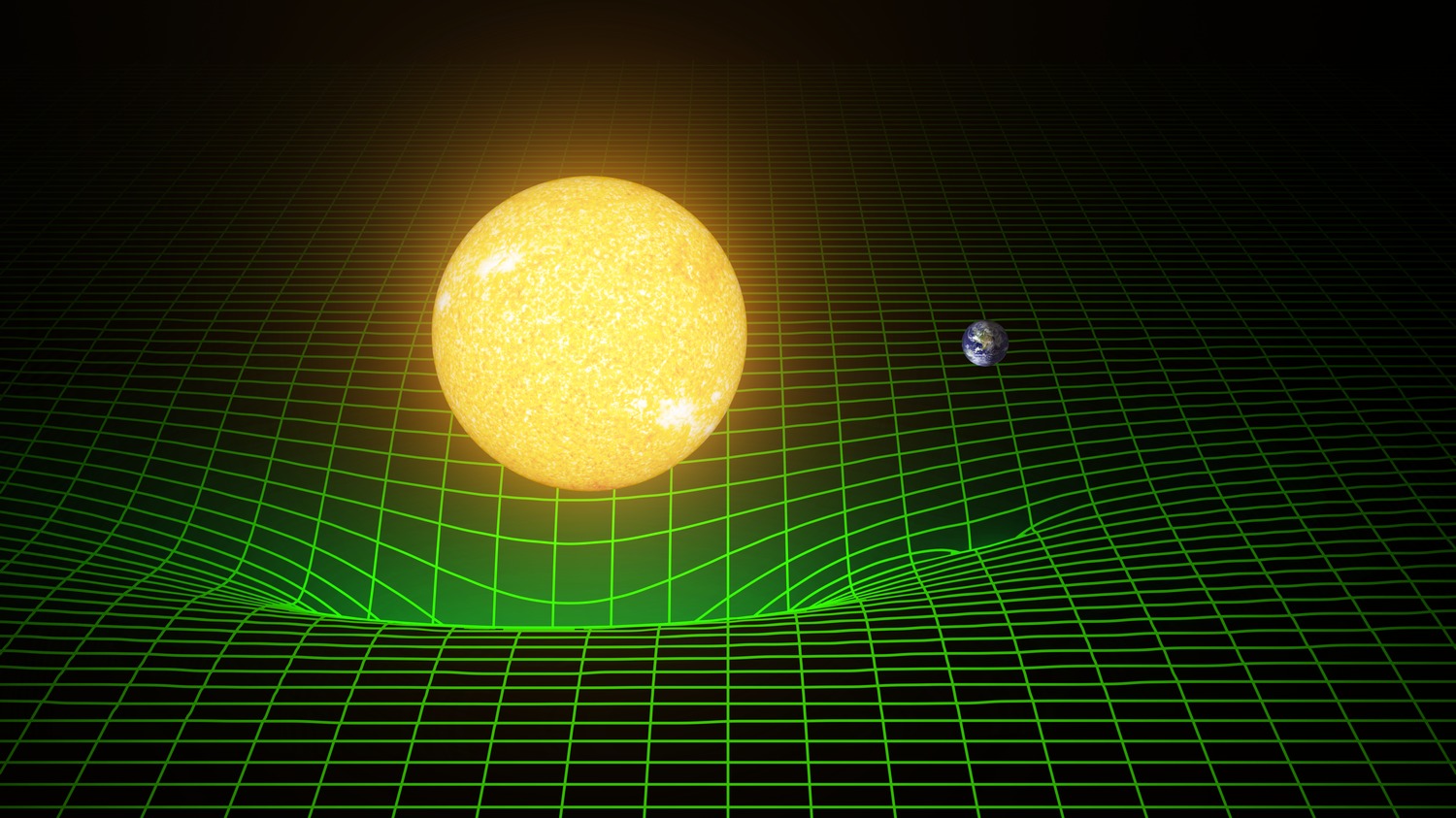


Although the Earth exerts a substantial gravitational pull, requiring that an object at its surface travel at ~11 km/s to escape our planet’s gravitational pull, the Sun’s gravitational influence dominates the Solar System. From Earth’s orbital location, an object would need to reach a speed of 42 km/s to escape from the Solar System entirely. In all of human history, only five (six, if you’re generous) spacecraft have met those criteria.
Of all the spacecraft ever launched, only five are on Solar System-departing trajectories.



There are five spacecraft presently either on their way out of the Solar System or that have already left it. From 1973-1998, Pioneer 10 was the most distant spacecraft from the Sun, but in 1998, Voyager 1 caught and passed it. In the future, Voyager 2 will pass it as well, and eventually New Horizons will pass Pioneer 11 and later Pioneer 10 as well.
The first, Pioneer 10, was launched a half-century ago.



The Pioneer 10 mission was launched with a number of instruments, and one of its science goals was to become the first spacecraft to visit and take data from Jupiter. Some of the first images of Jupiter from in situ are shown at right, showcasing a total solar eclipse shadow on Jupiter’s right side.
Humanity’s first spacecraft to encounter Jupiter, that gravitational assist accelerated it beyond escape velocity.



The most remarkable fact about Pioneer 10’s trajectory is that it gained nearly the maximum amount of velocity possible from a gravitational encounter with Jupiter. After becoming the first spacecraft to reach Jupiter in late 1973, it became the first spacecraft to achieve escape velocity in the Solar System. It remained our most distant spacecraft until 1998, when Voyager 1 surpassed it, and will fall to third place in 2023, when Voyager 2 overtakes it as well.
It remained our most distant probe until 1998, when Voyager 1 overtook it.
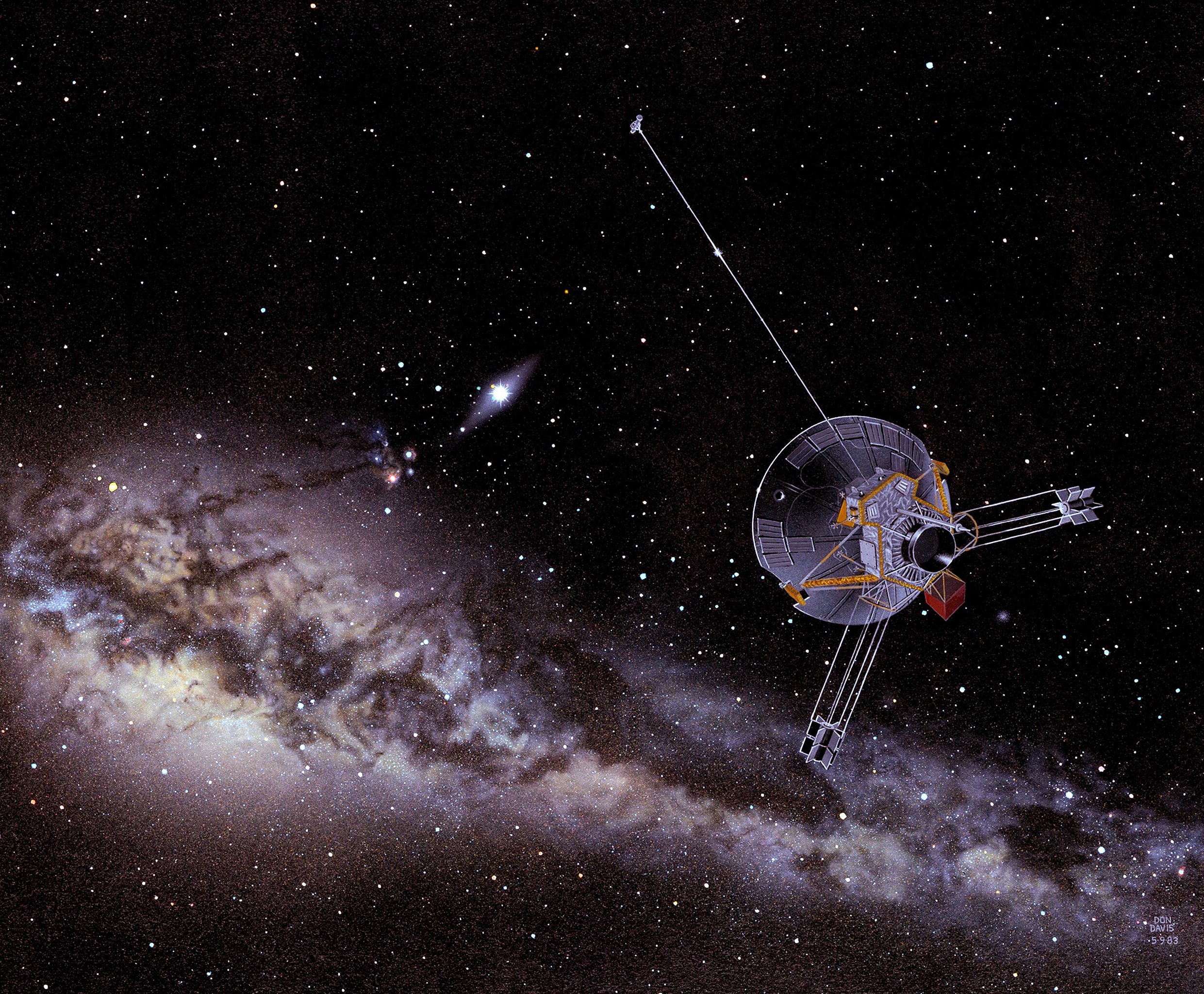


This illustration shows a Pioneer spacecraft on its way out of the Solar System, looking back at our Sun. The galactic plane is also visible. Although the Pioneer spacecraft are both now defunct, they will continue along their trajectory, influenced only by gravitation from hereon out.
Pioneer 11, launched in 1973, is also departing our Solar System.



Pioneer 11, following in the footsteps of Pioneer 10, actually flew through Jupiter’s lunar system, then used Jupiter’s gravity as an assist maneuver to take it to Saturn. While exploring the Saturnian system, a planetary science first, it discovered and then nearly collided with Saturn’s moon Epimetheus, missing it by an estimated ~4000 km.
Despite Jovian (1974) and Saturnian (1979) encounters, it’s our slowest outgoing spacecraft.



This graphic shows the relative positions of NASA’s most distant spacecraft as of 2011, where Voyager 1 was the most distant (it still is) but before it had left the heliosphere. In the time since, Voyager 2 has also left the heliosphere and has almost passed Pioneer 10 in terms of distance. New Horizons, which was only at Uranus’s orbital distance at the time (~20 AU) is now more than 150% farther (over 50 AU) from the Sun. It will someday pass both Pioneers, but will never pass either Voyager.
1977’s Voyager 1 is currently farthest from Earth: over 23 billion kilometers distant.
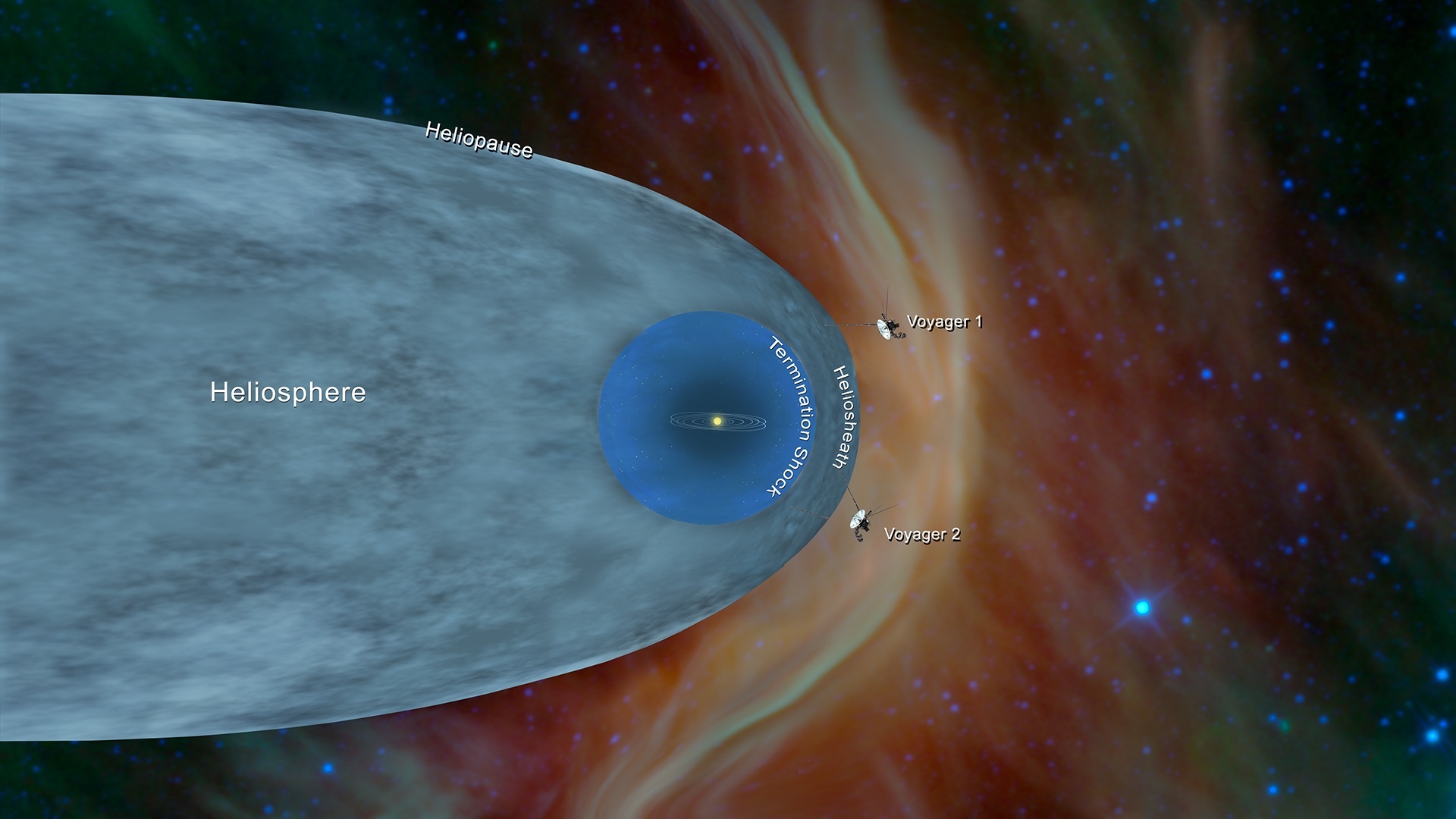


This illustration shows the position of NASA’s Voyager 1 and Voyager 2 probes, outside of the heliosphere, a protective bubble created by the Sun that extends well past the orbit of Pluto. Voyager 1 crossed the heliosphere’s boundary in 2012; Voyager 2 did the same in 2018. The asymmetric nature and extent of the bubble, particularly in the directions opposite the Voyager probes, have not been sufficiently quantified.
After entering interstellar space in 2012, it continually recedes ~17 km with each additional second.



This 1997 artwork shows the planets of the Solar System and the relative trajectories of the first four spacecraft on a course to exist the Solar System. In 1998, Voyager 1 overtook Pioneer 10, and in 2012, it passed the heliopause and entered interstellar space. Voyager 2 entered interstellar space in 2018 and won’t pass Pioneer 10 until 2023; therefore we strongly suspect that Pioneer 10 is in interstellar space as well, but it is no longer functional.
Voyager 2, also launched in 1977, slightly trails Voyager 1.



Voyager 2 famously conducted a “grand tour” of the Solar System, closely flying by each of the four gas giants and imaging their planetary, lunar, and ringed systems. In order to accomplish it, Voyager 2 was launched on an initially slower trajectory than Voyager 1. Despite being launched first, it’s less far and less fast than its twin counterpart.
After encountering all four gas giants, it entered interstellar space in 2018.
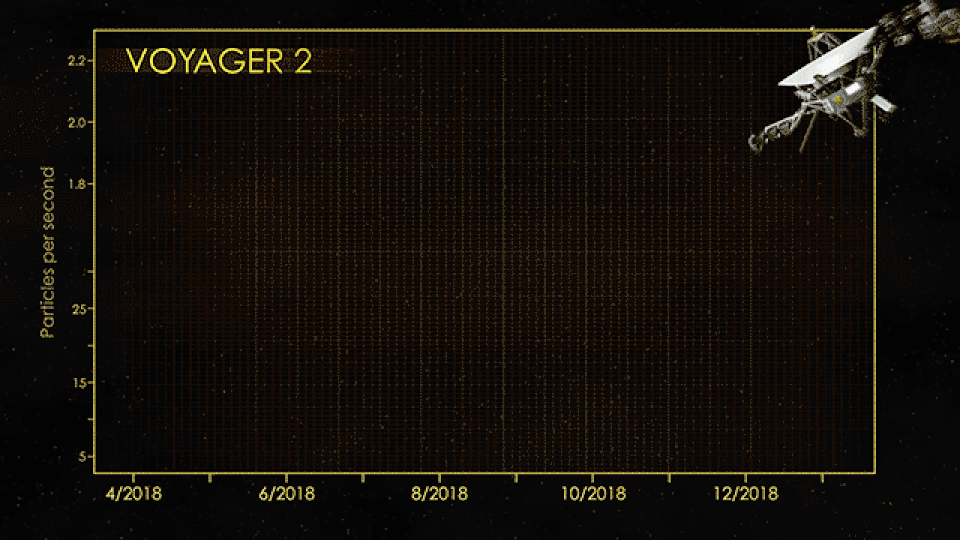


At the end of 2018, the cosmic ray subsystem aboard NASA’s Voyager 2 spacecraft provided evidence that Voyager 2 had left the heliosphere. There were steep drops in the rate of heliospheric particles that hit the instrument’s radiation detector, and significant increases in the rate of cosmic rays.
2006’s New Horizons became the fastest spacecraft ever launched.



Just 15 minutes after passing by Pluto on July 14, 2015, the New Horizons spacecraft snapped this image looking back at the faint crescent of Pluto illuminated by the Sun. The icy features, including multiple layers of atmospheric hazes, are breathtaking. New Horizons continues to depart the Solar System, and will someday overtake both Pioneer (but neither of the Voyager) spacecrafts.
Despite a boost/redirect by Jupiter while journeying to Pluto, it won’t catch either Voyager.



The New Horizons spacecraft, launched in 2006 with the fastest launch speed of any spacecraft, was slightly boosted but mostly redirected onto a trajectory that would lead to a close fly-by encounter with Pluto. The lack of a major gravity assist means that its speed will never allow it to catch up to either Voyager 1 or 2.
Voyager 2 will surpass Pioneer 10 in 2023; New Horizons will overtake both Pioneers next century.



Although Pioneer 10 was the first launched spacecraft, in 1972, with a trajectory that would take it out of the Solar System, it was surpassed by Voyager 1 in 1998 and will be surpassed by Voyager 2 in 2023 and New Horizons in the late 2100s. No other mission will overtake Voyager 1.
A 2098 encounter with Jupiter will cause now-defunct Ulysses to escape.
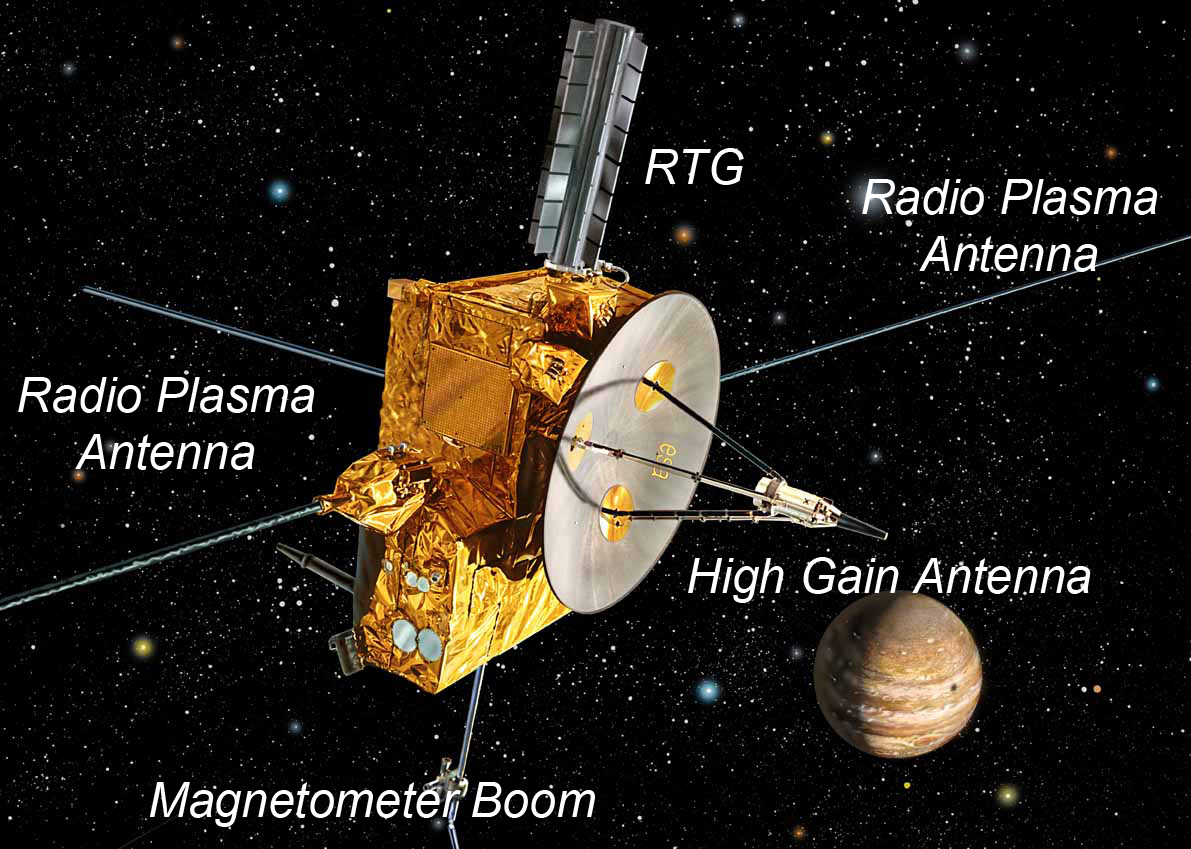


The Ulysses spacecraft, launched in 1990, was designed to orbit the Sun and study it at all latitudes, from a variety of near-and-far distances. A 2098 gravitational encounter with Jupiter is coming, which will impart a gravitational kick sufficient to send Ulysses out of the Solar System.
Without a superior mission, Voyager 1 will remain humanity’s most distant spacecraft.



The Solar System, as viewed on a logarithmic scale, highlights just how far away some of the objects are. The planets, the Kuiper belt, the Oort cloud, and the nearest star are all shown here, with Voyager 1, presently 155.5 AU from the Sun, our most distant artificial spacecraft.
Mostly Mute Monday tells an astronomical story in images, visuals, and no more than 200 words. Talk less; smile more.
